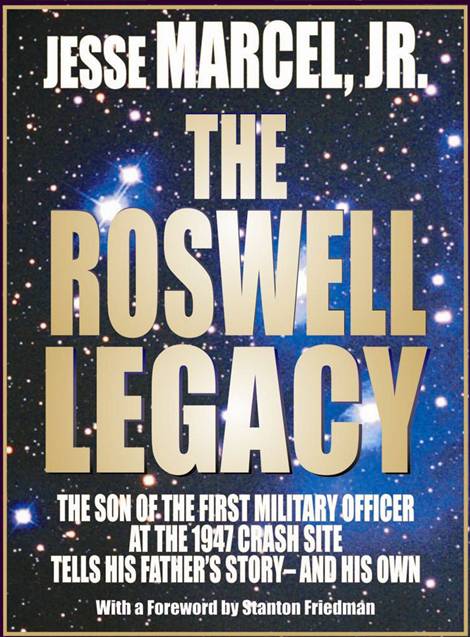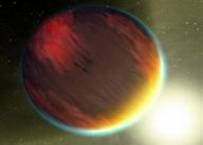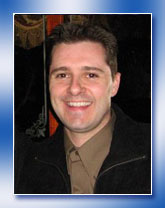Hello readers and welcome to another edition of “ News and Reviews”
My name is Daniel and I will be contributing to this segment alongside Diane Frola in this section of the Ufologist Magazine.
A little bit about myself I have known both Robert and Diane since 1995 when I first had a sighting and didn’t know who to tell. I found them in the local paper and went along to one of their meetings when they were not long starting out on their own. It was great to find two people who were so actively interested and passionate about their views/beliefs and both Robert and Diane made me feel really welcome, even before I told them about my experience/sightings. After going to a few meetings I decided I wanted to become a subscriber to their Magazine, great articles to read as well as local news in what’s happening our own backyards ! I was truly pleased to find a great magazine that was locally made right here in Australia.
After some time their inspiration had rubbed off to me, about the year 2000 I became an AUFORN researcher and helped with investigations, Night watches, 1800 sightings hotline call monitoring and Monthly meetings that were held in our local area. Something which I find truly enjoyable both for myself as well as for others. I really enjoy being a part of
AUFORN, and hope to continue to be part of their great organisation for many years to come.
I hope you all enjoy this segment and thank you for your support.
Thank you.
Daniel
The 2nd International Scientific & Metaphysical Symposium
2007 in Sydney Australia.
For anyone who didn’t make it this year to the ISMS missed a fantastic Conference. A special thanks must go to all Auforn team members who helped at the venue to make it all possible. Diane and Robert did a fantastic job putting it together and making it all run smoothly, And of course a very special thank-you to all the Guest speakers who agreed to come along and make it all worthwhile.
Philip Gardiner, Denise Blazek, Rob Mcintyre, Andy Thomas, George Knapp, David Reneke, Suzanne Hansen, Mary Rodwell, Wallace Thornhill, Paul Baird.
All the guest speakers were great to listen to, so much better to hear them talk about their experiences, fields and subjects. Don’t get me wrong I have read some of their books and find them interesting but to hear them speak is really worthwhile. Makes you feel more part of what’s going on. ( All the
conference video talks will be available to purchase through the Ufologist Magazine soon )
Very lucky me had the Privilege of spending quite a bit of time with two speakers in particular, Philip Gardiner ( Author of GNOSIS and THE ARC, THE SHROUD and MARY ) and George Knapp: investigative reporter (Hunt for the Skinwalkers , Area51 stories )
We did a bit of sightseeing together in Sydney, checked out the Opera House, Museum of the Freemasons, Darling Harbour and a River cruise in the evening to see the Sydney city by night. Not to mention we found a few great local pubs hidden away in city! Both Philip and George are professional, remarkable and inspirational people who made me feel welcome as an enthusiast in our fields and also with their sightseeing adventures. Memories which will last with me forever. I really hope to see them again in my travels.
Many people who came to the conference had the chance to meet and talk to the speakers at the Conference Dinner on the Saturday night, great opportunity for all who had a few questions of their own. Time was somewhat limited during the actual conference talks as we had many speakers to listen to and limited time !
I recommend to you all that if there ever is another conference that you do not miss out. Opportunities to listen to and meet our guest speakers especially do not come around all the time, well worth every penny.
Keeping an eye on our skies
Cold winter evenings are often the best for watching the skies, whether this be for UFO’s or planet gazing, star clusters and the like. Most people often stay indoors which in turn, results in missed opportunities to see something “out there” . Not only do we know this because it’s cold, but also because the AUFORN hotline slows down on the number of call-ins we receive. Please keep in mind that we have a few of the planets this month which will be very bright in the night sky and you don’t want to get that confused with a sighting ( as we do get many calls relating to bright stationary objects which in fact turn out to be just planets ) Venus will be very prominent in the evening western sky ( maybe approx 30cms at arms length from the horizon ) mars will be bright and getting brighter about 1 to 2 hours before sunrise in the north eastern horizon. Actually at the moment Mars is nearly as bright as Beta Centauri ( the 2nd brightest of the pointer stars )And of course Jupiter which is at one of its brightest as seen from our earth, all night long. So keep an eye on our local skies ! you never know what you might see tonight.
Life on other Planets.
When people ask me what I do, or what my interests are when I tell them, one of the most often asked questions ( besides “ have you seen a UFO “) is......”Do I think life exists on other planets or solar systems?” Firstly, let’s begin with a definition of life. Life = a living organism that is capable of metabolism, growth, reproduction, a response to stimuli or capable of adaption to the environment originating from within the particular organism. Whether this be plant life or animal/marine life.
In my own opinion YES, absolutely. We just have to look at our own Earth to find the answer to that question. Life can start off on any other celestial body orbiting a sun just like ours if the conditions are right for that particular organism. Conditions or distance from a sun do not have to be exactly the same as ours, we know that it is capable of existing in extremely harsh environments for example, bacteria in boiling acidic springs at Yellowstone can flourish, down to Giant tube worms in the very depths of our oceans up to four feet tall, surviving a combination of toxic chemicals from volcanic ocean vents, high pressures, and complete total darkness to name a few. These creatures are like nothing else on Earth. This proves to me that life can find away to exist and reproduce.
ARE WE JUST LUCKY? My opinion is I don’t think so. Maybe if a planet has its own atmosphere, or has a way of creating its own heat if too far from a star, it can begin. There could be other planets out there that have had millions of year’s head start to life longer than ours, look how far we have come in the last 50 years with technology and entering the space race. Imagine a life form capable of building technology that has been around for a million years longer than we have, what do you think we are capable here of on Earth with technology in another 500 years ! let alone maybe 5000 !
But with science, one has to make models and assumptions, some of these will stand until proven inaccurate. We require this to find life exists because we need proof. Scientists have many theories which may or may not be true, in a scientific view, these are some of the best we have at the moment. Just do some research on Carbon based life and what’s required to live in an atmosphere. Oxygen for example plays a major role in sustaining life here on earth alongside liquid water. We base a lot on these factors because maybe we see life cannot exist without it. Atmospheres, is a planet capable of holding an atmosphere? Is it necessary for life in order to survive living on Icy worlds or Extreme high temperatures ? even if this is all fact, Space is infinite and maybe we just haven’t found one close enough that we can see after all we have only skimmed the very edges of as far as we can see. Maybe the Governments will tell us one day what they have learned from all the collected crafts, evidence that has been retrieved and other scientific information thats been with held from the public. Ha ha don’t hold your breath for too long.
Please write in to the Editor and share your thoughts and opinions with us,
The Roswell Legacy.
In 1986, on his death bed, retired Major Jesse Marcel told his son; "You must tell the world the truth about Roswell. When the military no longer has a hold over you and your family, please set the record straight!"Major Jesse Marcel was the head of intelligence at an Army Air Field located at Roswell, [New Mexico]. On July 7, 1947 Major Marcel was sent to inspect what was being reported as the crash of an unidentified object on a ranch seventy-five miles northwest of the base. After inspecting the crash site, Marcel stopped by his home to show his family what he had discovered. Jesse Jr. was only eleven years old at the time, but vividly remembers his father's excitement, and seeing and handling a foil-like material that his father said was scattered around the wreckage. It was shiny and paper thin, but could not be torn or cut. It also retained a memory, mysteriously unfolding each time his father tried to fold it. And then there was that beam of metal several feet long, which was covered with hieroglyphic-type writing and markings. It was indeed something that was not of this world.
Upon return to his Air base, Major Marcel's superior officer, Col. William "Butch" Blanchard, ordered him to fly the material to Wright Patterson Air Base in Akron, OH, first stopping in Fort Worth, TX to show the strange findings to Gen. Roger Ramey,,the head of the Eighth Air Force. When Ramey learned that Blanchard had issued a press release stating they had recovered a "flying disc," and that it was being flown to Wright-Pat, Ramey was livid, and immediately called a press conference. Marcel would be photographed (see photo right) holding remnants of a weather balloon, and was forced to tell the media that these were his only findings at Roswell. From that time on, and despite dozens of collaborating witnesses at the crash site, Major Marcel was forced to live with that lie the rest of his life.
Source MMD Newswire.

UFO EVIDENCE.
Obtaining UFO evidence is hard, but finding not so.
There have been over 3500 documented sightings of unknown Aerial Phenomenon not only by the military, but also by commercial and civilian airline pilots. Do these sightings/observations span our entire history of powered flight ? Yes they do. We know this also due to declassified US government reports, along with investigations, and direct testimonies from military and civilian personnel, air traffic controllers and radar operators. (Ted Roe, NARCAP)
Also there are many Physical Trace Cases ( the involvement of Physical interaction between UFO’s and the environment ) examples of these are landing traces, burned/damaged vegetation, depressed grasslands, soil or imprints, and residues. There are many examples and documented cases of all listed above.
A Catalogue of Australian Physical Trace Cases (selected cases with further details) <http://www.project1947.com/bctrace2.htm>
Bill Chalker
The catalogue of Australian physical trace cases compiled by Keith Basterfield and Bill Chalker lists 147 cases covering the period from 1927 to 1997. Physical trace events with probative UFO correlation, i.e. 38 possible type 1 physical traces cases (Chalker, 1979 & 1987), are listed here to draw attention to cases of potential significance.
Government Cover-ups.
"The infrastructure needed to maintain and expand the level of secrecy which can deceive presidents and CIA Directors and senior congressional leaders and European Prime Ministers and the like is substantial - and illegal. Let me be clear, the entity which controls the UFO matter and its related technologies has more power than any single government in the world or any single identified world leader. The current state-of-the-art in secrecy is a hybrid, quasi-government, quasi privatized operation which is international - and functions outside of the purview of any single agency or any single government. ‘The Government' - as you and I and Thomas Jefferson may think of it - is really quite outside the loop. Rather, a select, tightly controlled and compartmentalized ‘black' or unacknowledged project controls these matters. Access is by inclusion alone and if you are not included, it does not matter if you are CIA Director, President, Chairman of Senate Foreign Relations or UN Secretary General, you simply will not know about or have access to these projects." Dr. Steven M. Greer, Understanding UFO Secrecy
Planet of promise could harbour life.

For the first time, astronomers have discovered a planet far, far away that might be similar to Earth. This distant world, which pirouettes around a dim bulb of a star with the unglamorous name Gliese 581, may possibly sport a landscape that would be vaguely familiar to us - a panorama of liquid oceans and drifting continents. If so, there's the chance that it's a home to life - perhaps even advanced life.It's been a dozen years since the first planet around a star other than the Sun was uncovered. Since then, small teams of astronomers have been flushing out fresh planetary prey at the rate of about one every two weeks. Today, it's easy to have a blase attitude about this continuing drizzle of new worlds. With more than two hundred planets already on the scoreboard, adding yet another sounds redundant.But this planet is different.It's different mostly because it's small. Nearly all the earlier discoveries were of massive worlds, lumbering giants comparable to Jupiter or Saturn. Such behemoths are likely to be buried in thick and toxic atmospheres, and seem ill-suited for supporting life.
Mind you, it's not that nature prefers the creation of such brawny planets; it's only that the wobble technique used to find them strongly favors the heavyweights.However, by measuring the motions of bantam stars, such as the red dwarf Gliese 581, it's possible to uncover lighter-weight worlds, since detectability depends on the ratio of stellar to planetary mass. Gliese 581c, as the new find is called, is the smallest yet discovered around a normal star, a mere 50% larger across than Earth. This diminutive size suggests (but does not prove) that it's a rocky world, like Venus, Earth or Mars.
(Seth Shostack) source; space.com
